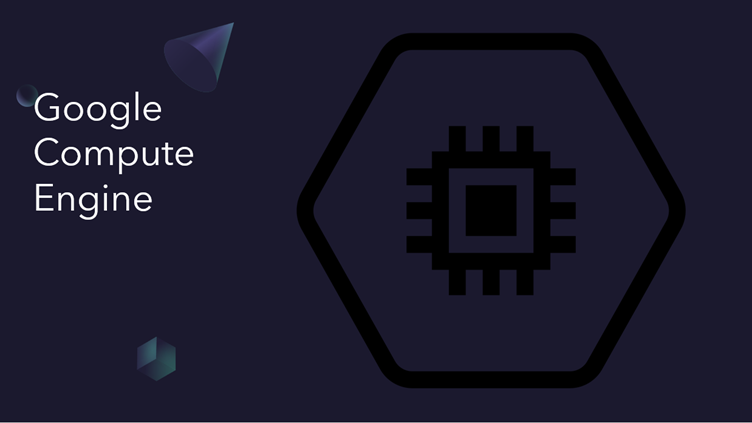“Hello my fellow technology enthusiasts, I wanted to speak about a subject that is recognized in its true nature by all but seldom understood. The topic is “Cloud Computing” and will be addressed in series. So, let ‘s dive into the world of cloud computing. In this blog I am going to focus on Google compute engine which include:
What is GCE
Virtual machine instances
Machine types
Features of GCE
Business value using Google compute engine
Google Compute Engine

You can build and run a virtual machine (VM) on Google’s infrastructure using the Google Compute Engine (GCE). The VM can be used as an origin server with your Fastly service once you set up and configure your VM instance and link your instance to a Fastly service.
The Compute Engine provides size, efficiency, and value that helps you to easily launch massive compute clusters on the infrastructure of Google. There are no upfront investments, and on a device that provides fast, reliable performance, you can run thousands of virtual CPUs. You may use a RESTful API, command line interface (CLI) or Web console to handle GCE. Compute Engine is a pay-per-use programme with a minimum of 10 minutes. Amazon’s Elastic Computing Cloud (EC2) and Microsoft Azure are in competition with GCE.
GCE’s Application Program Interface (API) offers virtual machine, DNS server and load balance functionality for administrators. A variety of CPU and RAM configurations and Linux distributions, including Debian and CentOS, have VMs available. For custom virtual machines, customers can use device images of their own. The residual data is encrypted using the AEC-128-CBC algorithm.
Click here for cloud based solutions for the businesses like Google, AWS and Azure
Virtual machine instances
Instances of the Compute Engine can run public Linux and Windows Server images that are provided by Google, as well as private custom images that you may generate or import from your existing systems. You can also deploy Docker containers that are launched automatically for instances that run a public image of the Container-Optimized OS.
By using a set of predefined machine types or making your own unique machine types, you can select the machine properties of the instances, such as the number of virtual CPUs and the amount of memory.
Machine types
A machine type is a collection of virtualized hardware resources, including device memory capacity, virtual CPU (vCPU) count, and permanent disc constraints, available for a virtual machine (VM) case. Machine types in the Compute Engine are clustered and curated for various workloads by families. You will choose from families that are general-purpose, memory-optimized, and compute-optimized.
When you create a case, you must choose a machine type. In each machine type family, you can select from several predefined machine types. You can create your own custom machine types if the predefined machine types do not meet your needs.
Using KVM (Kernel-based Virtual Machine) as the hypervisor, Google Compute Engine supports guest images running Linux and Microsoft Windows that are used to launch 64-bit x86 architecture-based virtual machines. VMs boot from a root filesystem ‘s permanent drive. The number of virtual CPUs, amount of memory provided by the VM is based on the computer type chosen. Click here to know more about Google machine types.
- General-purpose machines that give smooth stability of price and performance.
- Compute-optimized machines that provide the exclusive performance of CPU for scalable workloads.
- Memory-optimized machines that deliver huge memory space and are excellent choices for in-memory databases.
- Accelerator-optimized machines that rely on the A100 GPU, for extremely challenging applications.
Features of GCE
Global load balancing: Global load-balancing technology lets you spread incoming requests across different regions across pools of instances, so that optimal efficiency, throughput and availability can be reached.
Billing and pricing: For a minimum of 10 minutes, Google charges the VMs. Instances are paid in 1-minute intervals at the end of the 10th minute, rounding up to the nearest minute. Based on monthly use, sustained use-based billing would credit the consumers with the discounts. To get discounts on the standard, on-demand pricing, consumers do not have to pay a commitment fee upfront. Click here to know more about pricing.
Linux and Windows support: Like Debian, CentOS, CoreOS, SUSE, Ubuntu, Red Hat, FreeBSD, or Windows 2008 R2, 2012 R2 or 2016, run your preference of OS. You can also use, or carry your own, a shared picture from the Cloud platform community.
Sole-tenant nodes: Sole-tenant nodes are viewed as physical servers of the Compute Engine that are reserved only for our use. These nodes ease the deployment of bring-your-own-license (BYOL) applications and offer an approach to related types of devices and VM configuration choices in normal cases of computing.
Compliance and security: In the Compute Engine, all data written to a permanent disc is encrypted on the fly and then transferred and stored in encrypted form. ISO 27001, SSAE-16, SOC 1, SOC 2, and SOC 3 certifications have been completed by Google Compute Engine.
Transparent maintenance: Compute Engine will automatically move the VMs from one host to the other during the planned Google data centre maintenance without requiring any user intervention. This helps applications for greater uptime.
Custom machine types: With increments of 2 vCPUs and 0.25 GB at a time, you can form your VMs depending on how much vCPUs and GB of RAM you currently require. By simply paying just for what you want, custom computer forms help you save money.
Business value using Google compute engine
The Compute Engine provides improved security and kernel-level access. Event-driven functions that respond to cloud events are automated by the Compute Engine. The Compute Engine makes it simple to build and customise high-performance VMs to scale to any workload size rapidly and comfortably. Click here for general IT Support services for Businesses
